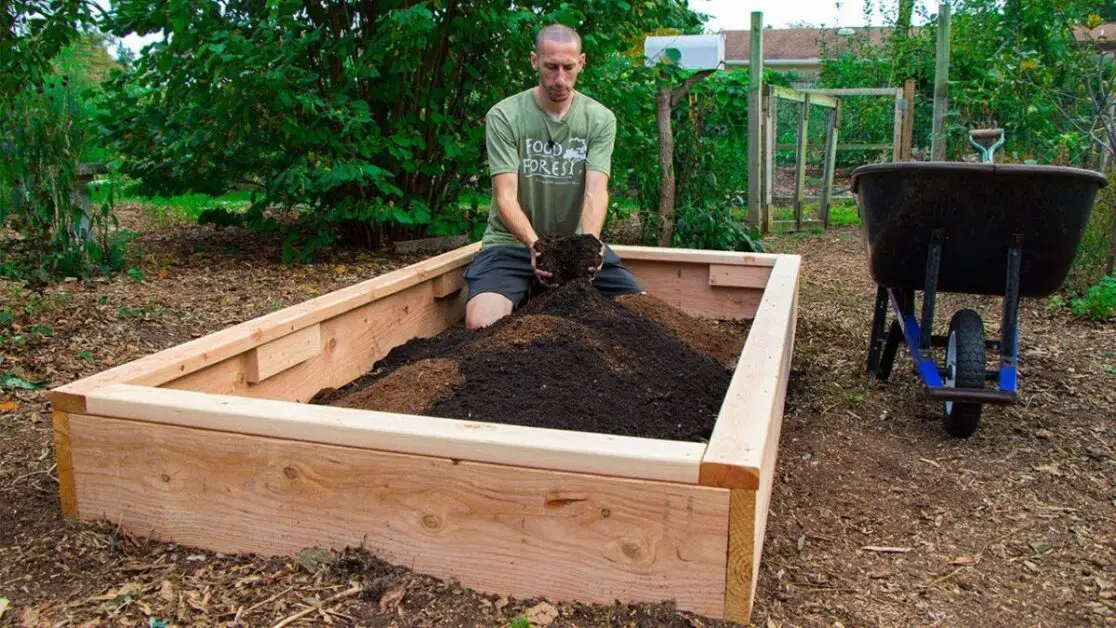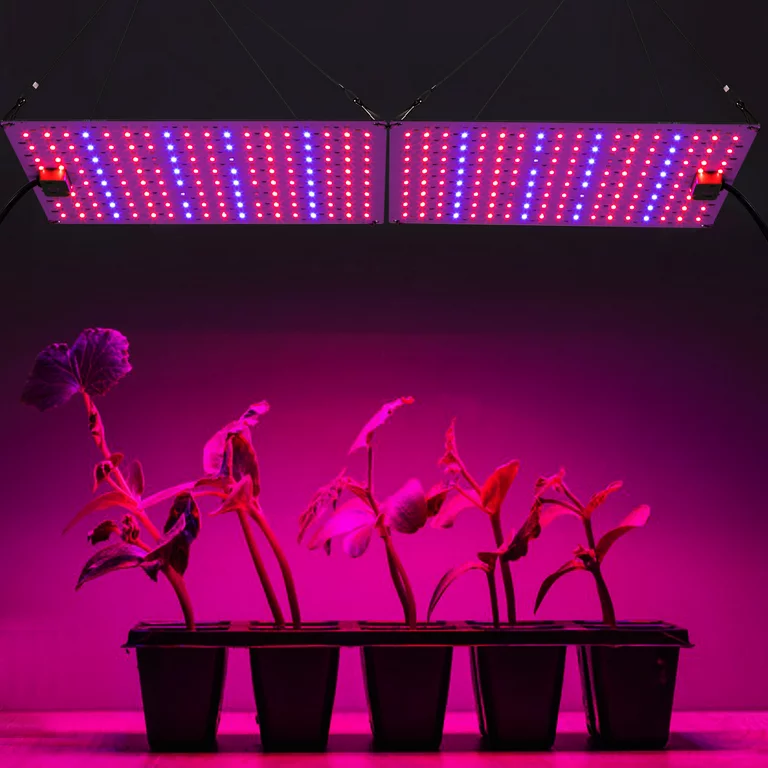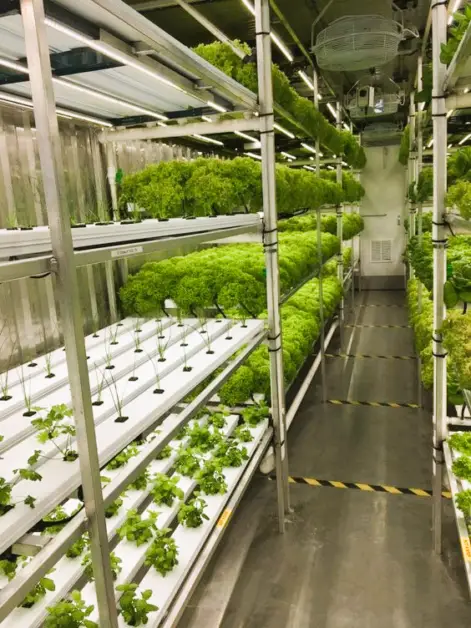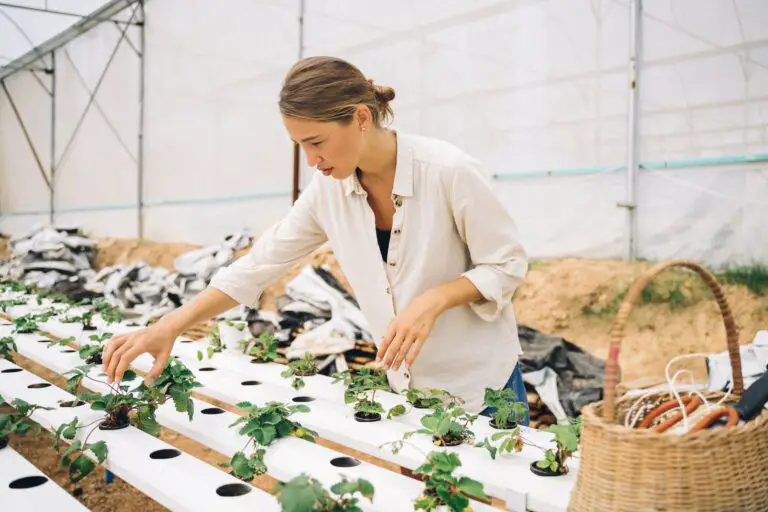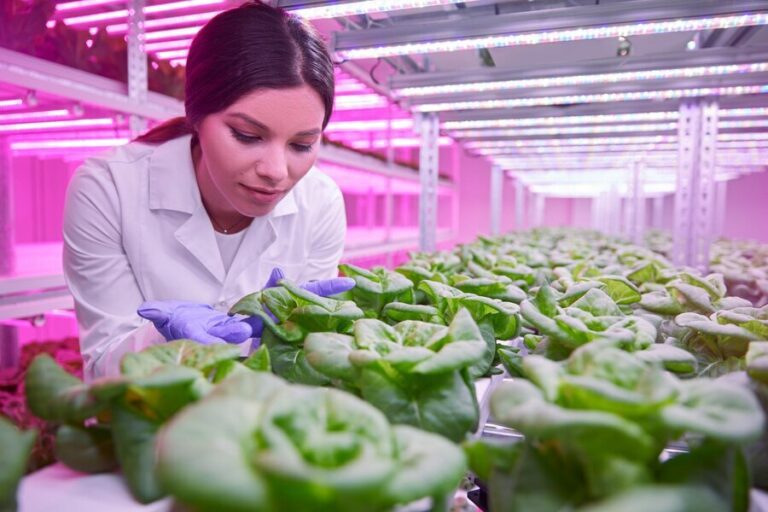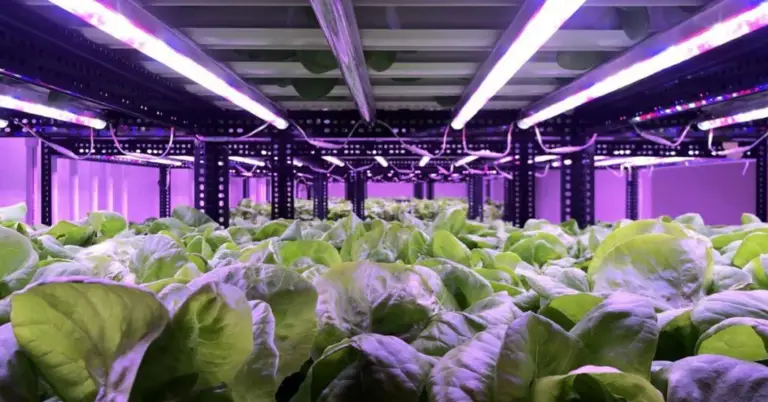Hydroponic Kale: How to Grow Healthy and Delicious Kale in Water
Table of Contents
Advantages of Growing Kale Hydroponically
Hydroponic gardening offers numerous advantages for growing kale compared to traditional soil-based methods. One major advantage is enhanced control over the growing environment, allowing for optimal plant growth and high yields. In hydroponic systems, growers can manipulate variables such as nutrient concentration, pH levels, temperature, and humidity to create the ideal conditions for kale’s growth.
Moreover, hydroponic systems conserve water and nutrients by utilizing recirculating systems that minimize waste. Compared to soil-based cultivation, hydroponics requires up to 90% less water while still providing kale with the necessary hydration. This resource efficiency is particularly beneficial in regions facing water scarcity or where drought conditions prevail. Additionally, the controlled nutrient delivery in hydroponic systems ensures that kale plants receive the ideal balance of essential elements, promoting vigorous growth and maximizing nutritional value.
These advantages not only benefit commercial growers seeking high-quality produce but also provide an appealing option for home gardeners looking to cultivate kale on a smaller scale. Whether you are an aspiring hydroponic enthusiast or an experienced gardener, harnessing the advantages of hydroponic systems can lead to bountiful and nutritious kale crops year-round.
Understanding the Basics of Hydroponic Systems for Kale
Hydroponic systems are a revolutionary method of growing kale that eliminates the need for traditional soil-based cultivation. In this innovative and efficient approach, plants are grown in nutrient-rich water solutions, providing them with all the essential elements they need for healthy growth. By understanding the basics of hydroponic systems for kale, gardeners can unlock a wealth of benefits and maximize the yield of their crops.
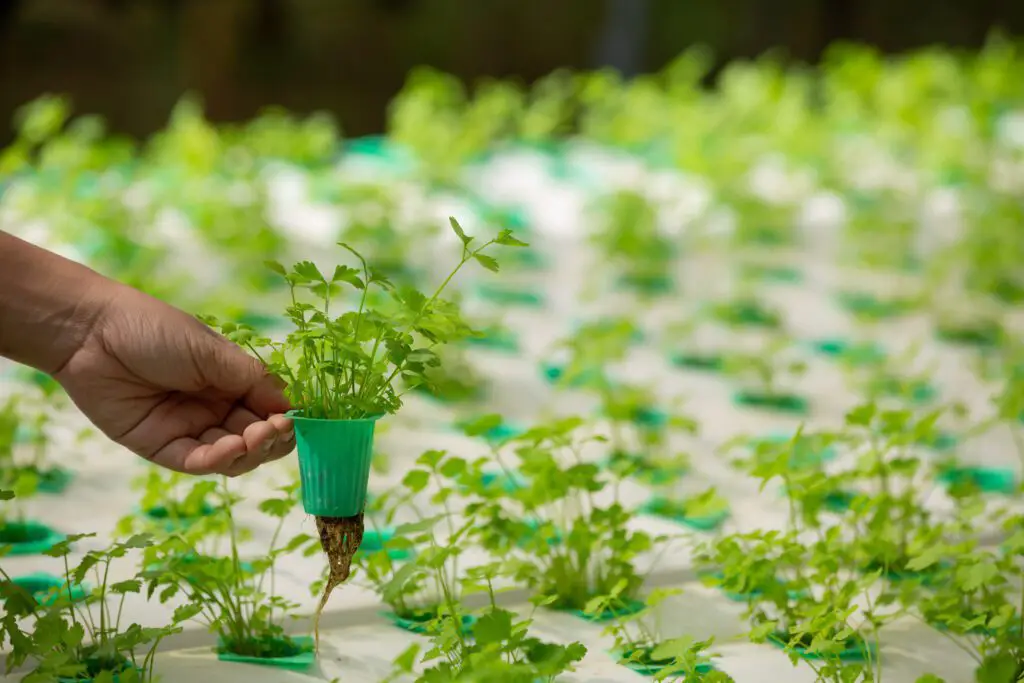
One key aspect of hydroponic systems is the use of a growing medium, which serves as a support for the plants and allows the water and nutrient solution to flow freely. Commonly used mediums include perlite, coconut coir, and rockwool, each with its own advantages and considerations. These growing mediums provide stability to the kale plants, ensuring they receive adequate support while their roots have continuous access to the nutrient-rich water. Additionally, hydroponic systems can incorporate various setups, such as nutrient film technique (NFT), deep water culture (DWC), or vertical systems, allowing gardeners to customize their setup according to available space and resources.
By harnessing the power of hydroponic systems, gardeners can enjoy an array of benefits when growing kale. Firstly, hydroponic systems offer more control over environmental factors such as light, temperature, and humidity, providing an optimal growing environment for the plants. This control enhances the growth rate and overall quality of the kale, resulting in consistent and high-quality harvests. Moreover, hydroponic systems have the potential to reduce water usage compared to traditional soil-based cultivation, making them a more sustainable choice. Furthermore, by eliminating the use of soil, hydroponic systems minimize the risk of soil-borne diseases and pests, reducing the need for harmful pesticides and promoting a healthier crop.
Selecting the Right Kale Varieties for Hydroponic Growth
When it comes to hydroponic kale cultivation, choosing the right varieties is essential for successful growth and optimal yields. Selecting the appropriate kale varieties for hydroponic growth involves considering their adaptability to the indoor environment and their specific growth characteristics.
| Kale Variety | Description | Growing Conditions |
|---|---|---|
| Curly Kale (e.g., Winterbor, Redbor) | Frilly, curly leaves with a robust flavor. | – Temperature: 60-70°F (15-21°C) |
| – pH Level: 5.5-6.5 | ||
| – Nutrient Solution: Balanced | ||
| Lacinato Kale (Dinosaur Kale) | Dark, bumpy leaves with a rich, earthy taste. | – Temperature: 60-70°F (15-21°C) |
| – pH Level: 6.0-7.0 | ||
| – Nutrient Solution: High in Nitrogen | ||
| Red Russian Kale | Purple stems and finely curled leaves. | – Temperature: 55-75°F (13-24°C) |
| – pH Level: 6.0-7.5 | ||
| – Nutrient Solution: Balanced | ||
| Siberian Kale | Blue-green leaves, cold-tolerant. | – Temperature: 50-75°F (10-24°C) |
| – pH Level: 6.0-7.5 | ||
| – Nutrient Solution: Balanced | ||
| Chinese Kale (Kai Lan) | Thick, flat leaves with a mild flavor. | – Temperature: 50-75°F (10-24°C) |
| – pH Level: 6.0-7.0 | ||
| – Nutrient Solution: High in Nitrogen |
One popular choice for hydroponic systems is the curly kale variety, which is known for its tightly curled leaves and vibrant green color. This variety thrives in a controlled environment and is highly resistant to pests and diseases. Another variety that is well-suited for hydroponic cultivation is the lacinato kale, also known as dinosaur kale. It has dark, textured leaves and a more robust flavor compared to curly kale. Lacinato kale is known for its excellent nutrient absorption and high resistance to environmental stressors, making it a reliable choice for hydroponic enthusiasts.
When selecting kale varieties for hydroponic growth, it is crucial to consider their growth rate and maturation period. Some variants, such as the Red Russian kale, have a faster growth rate and an early maturation period. This makes them ideal for those who want to enjoy an early harvest. On the other hand, the Winterbor kale variety takes longer to mature but offers a higher yield and better cold tolerance.
Understanding the unique characteristics and growth requirements of different kale varieties is the key to successful hydroponic cultivation. By selecting the right varieties based on their adaptability, growth rate, and yield potential, hydroponic enthusiasts can maximize their chances of growing healthy and robust kale plants.
Creating the Ideal Growing Environment for Hydroponic Kale
When it comes to growing kale hydroponically, creating the ideal growing environment is crucial for ensuring optimal growth and healthy plants. By providing the right conditions, you can cultivate vibrant kale that is packed with nutrients and flavor.

Temperature and humidity control are key factors in creating the ideal environment for hydroponic kale. Aim for a temperature range of 65-75°F (18-24°C) during the day and slightly cooler at night. This mimics the conditions that kale would experience in a traditional soil-based garden and promotes healthy growth. Additionally, maintaining a relative humidity level between 50-60% helps prevent moisture-related issues such as mold or fungus. Whether you choose to use ventilation systems, fans, or dehumidifiers, ensuring proper airflow will aid in regulating temperature and humidity for thriving hydroponic kale plants.
To further promote optimal kale growth, consider the lighting requirements. Kale plants thrive with 12-16 hours of light per day. High-quality LED grow lights are recommended as they provide the necessary spectrum for plant growth while being energy-efficient. Position the lights at an appropriate distance from the plants to avoid burning or stunted growth. Using light timers can help maintain consistent lighting schedules, ensuring your hydroponic kale receives the necessary light energy throughout its growth stages.
By carefully controlling the temperature, humidity, and lighting in your hydroponic system, you can create an ideal growing environment for kale. These factors play a vital role in ensuring the health and productivity of your plants, allowing you to enjoy a bountiful harvest of nutritious kale year-round.
Providing Adequate Nutrients for Healthy Hydroponic Kale
To ensure healthy growth and optimal yields in your hydroponic kale system, providing adequate nutrients is crucial. Unlike traditional soil-based gardening where nutrients are naturally present, hydroponic systems require a more precise and controlled approach to nutrient supplementation.
Ensuring adequate nutrients is crucial for the healthy growth of kale in a hydroponic system. Here are points to consider:
- Balanced Nutrient Solution:
- Use a hydroponic nutrient solution formulated for leafy greens or customize one with a balanced ratio of essential nutrients, including nitrogen (N), phosphorus (P), and potassium (K).
- Nitrogen Dominance:
- Kale is a leafy green, so it typically benefits from a nutrient solution higher in nitrogen. Ensure that the solution has a higher concentration of nitrogen during the vegetative growth stage.
- pH Level:
- Maintain the pH level of the nutrient solution in the range of 5.5 to 6.5 for optimal nutrient absorption. Regularly monitor and adjust the pH as needed.
- Secondary Nutrients and Micronutrients:
- Include secondary nutrients such as calcium, magnesium, and sulfur in the nutrient solution.
- Ensure the presence of essential micronutrients like iron, manganese, zinc, copper, molybdenum, and boron.
- EC/TDS Levels:
- Monitor the Electrical Conductivity (EC) or Total Dissolved Solids (TDS) levels of the nutrient solution. Adjust these levels according to the growth stage of the kale.
- Iron Chelates for Chlorophyll Formation:
- Kale, like other leafy greens, requires iron for chlorophyll formation. Consider using iron chelates in the nutrient solution to prevent iron deficiency.
- Regular Monitoring and Adjustments:
- Monitor the hydroponic system regularly for any signs of nutrient deficiencies or imbalances.
- Adjust the nutrient solution composition based on the specific needs of the kale plants and the conditions of your hydroponic setup.
- Water Quality:
- Use clean and well-balanced water to prepare the nutrient solution. Poor water quality can negatively impact nutrient availability to the plants.
- Seasonal Adjustments:
- Make seasonal adjustments to the nutrient solution, considering factors such as temperature and light intensity, which can affect nutrient uptake.
- Follow Manufacturer Guidelines:
- If you’re using commercial hydroponic nutrient solutions, follow the manufacturer’s guidelines for mixing and application.
- Avoid Overfertilization:
- While it’s crucial to provide adequate nutrients, avoid overfertilization, as excessive nutrient levels can lead to nutrient toxicity and negatively impact plant health.
The primary nutrients required by kale plants are nitrogen (N), phosphorus (P), and potassium (K). These elements play key roles in overall plant health and development. Nitrogen promotes robust leaf growth, while phosphorus supports root development and flowering. Potassium aids in nutrient uptake and enhances the plant’s ability to resist diseases and stress. In addition to these macronutrients, kale also requires secondary nutrients like calcium, magnesium, and sulfur, as well as trace elements such as iron, manganese, zinc, and copper.
To ensure proper nutrient delivery, a well-balanced and specifically formulated hydroponic nutrient solution is necessary. This solution should provide the necessary macro and micronutrients in the correct ratios for optimal kale growth. It is essential to carefully follow the manufacturer’s instructions when preparing the nutrient solution, as over or underfeeding can lead to nutrient imbalances and adversely affect the health of your kale plants.
Proper monitoring of nutrient levels is also crucial. Regularly testing the pH and electrical conductivity (EC) of the nutrient solution will help you identify any deficiencies or excesses. pH levels should be maintained in the range of 5.5 to 6.5 to ensure nutrient availability, while the EC should be within the recommended range according to the growth stage of your kale plants. Adjustments to the nutrient solution can be made by adding specific fertilizers or pH adjusters as necessary. Remember to keep accurate records of the nutrient solution composition and any changes made, as this will help you fine-tune your nutrient management and ensure consistent, healthy growth of your hydroponic kale.
Managing pH Levels for Optimal Growth of Hydroponic Kale
Maintaining the proper pH levels is crucial for the optimal growth of hydroponic kale. pH, which stands for “potential of hydrogen,” refers to the acidity or alkalinity of the nutrient solution. The pH scale ranges from 0 to 14, with 7 being considered neutral. For kale to thrive in hydroponic systems, a pH level between 5.5 and 6.5 is ideal.
When the pH level is too high or too low, it can significantly impact nutrient availability and absorption by the kale plants. If the pH is too high (alkaline), essential nutrients like iron, manganese, and zinc become less available to the plants, leading to nutrient deficiencies. On the other hand, if the pH is too low (acidic), it can result in nutrient toxicities and damage to the root system.
To manage pH levels effectively, regular monitoring is necessary. This can be done using a pH meter or test strips specifically designed for hydroponic systems. When the pH deviates from the desired range, adjustments can be made using pH-up or pH-down solutions. Remember, maintaining a stable pH level is vital for the overall health and productivity of your hydroponic kale plants.
Controlling Temperature and Humidity for Thriving Hydroponic Kale
Maintaining the appropriate temperature and humidity levels is essential for the thriving growth of hydroponic kale. Temperature affects the overall health and development of the plant, while humidity plays a crucial role in moisture retention and transpiration. To ensure optimal conditions for your hydroponic kale, here are some key considerations.
Firstly, it is important to maintain a consistent temperature range of 65-75°F (18-24°C) during the day and slightly lower at night. Fluctuating temperatures can stress the plants and hinder their growth. To achieve this, you can use a combination of ventilation, cooling systems, and heating devices to regulate the temperature within the growing area.
Secondly, controlling humidity levels is equally vital in providing an environment that promotes healthy kale growth. Aim for a humidity range of 50-70% to prevent excessive moisture buildup that can lead to the growth of molds and fungi. You can monitor and adjust humidity levels by using dehumidifiers, ventilation, and misting systems. By striking the right balance between temperature and humidity, your hydroponic kale will thrive and produce abundant, nutritious leaves for your enjoyment.
Preventing and Managing Common Pests and Diseases in Hydroponic Kale
Common pests and diseases can be a major concern for hydroponic kale growers. These unwanted invaders can wreak havoc on your carefully nurtured plants if left unchecked. However, with proactive prevention and effective management strategies, you can protect your hydroponic kale crop and ensure its healthy growth.
One of the most effective preventive measures is to maintain a clean and sterile growing environment. Regularly sanitize all equipment, including trays, containers, and tools, to eliminate any potential sources of contamination. This will help prevent the spread of pests and diseases within your hydroponic system. Additionally, keep your growing area free from debris and remove any dead or dying plant material promptly as they can harbor pests and provide a breeding ground for diseases.
To further fortify your kale plants against common pests, consider using biological controls. Beneficial insects, such as ladybugs and lacewings, can be introduced into your hydroponic system to prey on harmful pests like aphids and mites. These natural predators can help maintain a healthy balance and reduce the risk of pest outbreaks. Additionally, sticky traps and yellow sticky cards can be used to monitor and capture flying pests, providing an early warning system and preventing their population from getting out of hand. By staying vigilant and taking these proactive steps, you can effectively prevent and manage pests and diseases in your hydroponic kale garden.
Proper Lighting Techniques for Maximum Growth of Hydroponic Kale
To achieve maximum growth and yield in hydroponic kale, providing proper lighting is essential. Adequate light is necessary for photosynthesis, the process by which plants convert light energy into chemical energy to fuel their growth. In hydroponics, where plants are grown without soil, the correct lighting techniques can make a significant difference in the overall health and productivity of kale.
When it comes to lighting for hydroponic kale, the primary consideration is the intensity and spectrum of light. Kale plants thrive under a full spectrum of light, which includes a balanced combination of blue, red, and other wavelengths. This can be achieved through the use of LED grow lights, which allow gardeners to tailor the light spectrum to meet the specific needs of the plants. LED lights are not only energy-efficient but also emit very little heat, reducing the risk of heat damage to the plants. Additionally, providing the right light intensity is crucial. On average, kale requires around 14-16 hours of light per day for optimal growth. By ensuring a consistent light schedule, you can help mimic natural daylight and promote healthy kale growth in your hydroponic system.
for more details check the vedio given below:
Regular Maintenance and Care Tips for Hydroponic Kale
Regular maintenance and care are essential for the successful growth of hydroponic kale. By following these tips, you can ensure that your plants remain healthy and productive throughout their growth cycle.
1. Nutrient Solution: Regularly monitor and adjust the nutrient solution to meet the specific needs of your kale plants. Hydroponic systems use a precise mix of nutrients, so maintaining the correct balance is crucial. Check the pH levels and adjust accordingly to promote optimal nutrient absorption.
2. Water Quality: The quality of water directly affects the health of your hydroponic kale. Use clean, filtered water free from contaminants and chlorine. Replenish the water regularly to maintain proper oxygen levels and prevent the buildup of toxins.
3. Lighting: Adequate lighting is essential for the growth of hydroponic kale. Ensure that your plants receive the right intensity and duration of light each day. LED grow lights are often recommended for their energy efficiency and ability to provide a spectrum of light that promotes vigorous growth.
4. Temperature and Humidity: Maintain a consistent temperature and humidity level in the growing environment. Kale thrives in temperatures between 60-70°F (15-21°C) and a humidity range of 50-60%. Use ventilation systems, fans, or air conditioning to regulate the conditions and prevent the growth of mold or mildew.
5. Pest and Disease Management: Regularly inspect your hydroponic system for any signs of pests or diseases. Implement preventive measures such as proper sanitation, removing infected plants immediately, and using organic pesticides or beneficial insects if necessary.
By incorporating these regular maintenance and care tips into your hydroponic kale growing routine, you can ensure the healthy development of your plants and an abundant harvest. Stay tuned for more valuable information on growing hydroponic kale!
Harvesting and Storing Hydroponic Kale for Freshness and Flavor
To ensure the highest quality in taste and nutrition, harvesting and storing hydroponic kale require some attention to detail. Harvesting kale at the right time and storing it properly will help maintain its freshness and flavor for longer periods. When it comes to harvesting hydroponic kale, the general rule is to wait until the leaves have reached their desired size and are vibrant and crisp.
To harvest hydroponic kale, use clean, sharp shears or scissors to cut the outer leaves close to the base of the plant. It’s important not to remove all the leaves at once, as this can hinder the plant’s ability to continue growing and producing new leaves. Instead, selectively harvest mature leaves while leaving the younger ones to grow. This method allows for a continuous harvest throughout the growing season, ensuring a fresh supply of kale.
Once harvested, it’s crucial to store hydroponic kale properly to preserve its freshness and flavor. Start by gently rinsing the leaves in cold water to remove any dirt or debris. After rinsing, shake off any excess moisture and pat the leaves dry with a clean towel or paper towels. Avoid washing the leaves until you’re ready to use them, as excess moisture can lead to spoilage.
To store hydroponic kale, wrap the leaves loosely in a damp paper towel to maintain their moisture level. Place the wrapped kale in a perforated plastic bag or a container with ventilation to allow for air circulation. Store the kale in the crisper drawer of your refrigerator, where the temperature is cooler and more consistent. When stored properly, hydroponic kale can retain its freshness and flavor for up to a week, giving you ample time to enjoy its nutritious benefits.
Delicious Recipes and Creative Ways to Enjoy Hydroponic Kale
Kale is a versatile and nutritious leafy green that can be enjoyed in a variety of delicious recipes. Whether you’re looking to incorporate more kale into your diet or explore new ways to enjoy this nutrient-packed vegetable, there are plenty of creative culinary options to try. One popular recipe is a kale and quinoa salad, which combines the earthy flavors of kale with the hearty texture of quinoa. Add some roasted vegetables and a tangy vinaigrette, and you’ll have a satisfying and healthy meal.
Another tasty way to enjoy hydroponic kale is by making kale chips. Simply tear the kale into bite-sized pieces, toss them with olive oil and your favorite seasonings, and bake them in the oven until crispy. These kale chips make a delicious and guilt-free alternative to traditional potato chips, and they’re packed with vitamins and minerals. Additionally, kale can be blended into smoothies for a refreshing and nutrient-packed beverage. Combine kale with fruits like bananas, berries, and oranges, add some Greek yogurt for creaminess, and blend until smooth. This smoothie is not only delicious but also a great way to sneak in some extra greens into your daily routine.
With its endless culinary possibilities, hydroponic kale is a fantastic addition to any menu. Whether you choose to whip up a kale and quinoa salad, bake some crispy kale chips, or blend it into a refreshing smoothie, you’ll be sure to enjoy the unique flavors and health benefits of this incredible leafy green. So go ahead and get creative in the kitchen – your taste buds and your body will thank you!
Troubleshooting Common Issues in Hydroponic Kale Growth
When it comes to growing kale hydroponically, there are several common issues that can arise. One such issue is nutrient deficiency, which can manifest in the form of yellowing or stunted growth. This can be caused by imbalances in the nutrient solution, such as an inadequate supply of essential macronutrients like nitrogen, phosphorus, and potassium. To address this issue, it is important to regularly monitor the nutrient levels in the solution and adjust accordingly. Additionally, ensuring that the pH levels are within the optimal range for kale growth (around 5.5 to 6.5) can help improve nutrient uptake and prevent deficiencies.
Another issue that hydroponic kale growers may encounter is root rot, which is caused by excessive moisture and poor oxygenation of the root zone. This can lead to wilting, discoloration, and overall poor plant health. To prevent root rot, it is crucial to maintain proper drainage in the system and avoid overwatering. Implementing a recirculating system or using an air stone to increase oxygen levels in the nutrient solution can also help mitigate this issue. Lastly, practicing good hygiene by regularly cleaning and sterilizing the hydroponic system can prevent the buildup of pathogens that can contribute to root rot and other diseases.
This, however, is just the tip of the iceberg when it comes to troubleshooting common issues in hydroponic kale growth. By recognizing and addressing these problems proactively, growers can ensure the health and productivity of their kale crops. Stay tuned as we delve into more specific challenges and their solutions in the next section of this article.
Why is my hydroponic kale not growing properly?
There could be several reasons for poor growth in hydroponic kale, such as inadequate nutrient levels, improper pH levels, incorrect temperature or humidity, or pest infestations. It’s important to troubleshoot each of these factors to identify the specific issue and take appropriate action.
How can I determine the nutrient requirements for my hydroponic kale?
The nutrient requirements for hydroponic kale can vary depending on the specific variety being grown. It’s recommended to consult with a hydroponic expert or refer to a reliable source for the ideal nutrient solution formulation and schedule for your kale variety.
What should I do if the pH levels in my hydroponic system are too high or too low?
If the pH levels are too high (alkaline), you can adjust it by adding a pH down solution or using an acid-based nutrient mixture. Conversely, if the pH levels are too low (acidic), you can raise it by using a pH up solution or incorporating an alkaline-based nutrient mix.
How can I prevent and manage pests and diseases in my hydroponic kale system?
To prevent pests and diseases in hydroponic kale, it’s essential to maintain a clean and hygienic growing environment. Regularly inspect the plants for any signs of pests or diseases, and promptly take action by introducing beneficial insects, using organic pest control methods, or applying appropriate fungicides or insecticides if necessary.
What are the ideal lighting techniques for hydroponic kale growth?
Hydroponic kale requires a minimum of 10-12 hours of light per day. Using full-spectrum LED grow lights or high-intensity discharge (HID) lights with a mix of blue and red spectrum wavelengths can promote healthy growth and maximize yields. It’s important to position the lights at the appropriate distance from the plants to avoid heat stress or light burn.
How often should I perform maintenance and care tasks for my hydroponic kale system?
Regular maintenance tasks for hydroponic kale include checking and adjusting nutrient levels, monitoring pH and EC levels, cleaning and sanitizing the growing equipment, pruning or trimming the plants, and ensuring proper ventilation and airflow. These tasks should be performed at least once a week or as needed to ensure optimal plant health.
What is the best way to harvest and store hydroponic kale for freshness and flavor?
When harvesting hydroponic kale, it’s recommended to cut the outer leaves first, allowing the inner leaves to continue growing. Harvesting in the morning when the plants are hydrated can help retain freshness. After harvest, rinse the leaves gently with cool water, pat them dry, and store them in a sealed container or plastic bag in the refrigerator to maintain flavor and crispness.
Can hydroponic kale be used in specific recipes or cooking methods?
Absolutely! Hydroponic kale is versatile and can be used in a variety of recipes. It’s great for salads, smoothies, stir-fries, soups, and even baked kale chips. Its tender leaves and rich flavor make it a popular choice among home cooks and chefs alike. Be creative and explore different cooking methods to enjoy the fresh taste of hydroponic kale.

